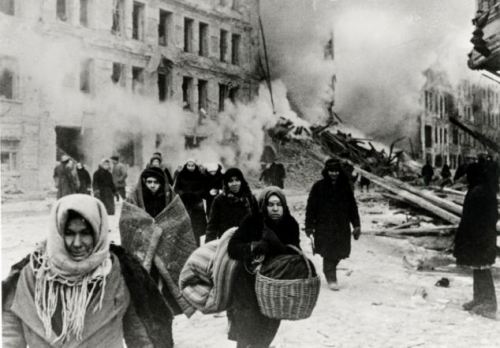The Betrayal of LeningradDuring World War II, on the 8th of September, 1941 German forces surrounded
The Betrayal of LeningradDuring World War II, on the 8th of September, 1941 German forces surrounded the City of Leningrad, formerly known as St. Petersburg. During the siege, which wouldn’t be lifted until January 27th of 1944, the soldiers and civilians of Leningrad would suffer hardship and deprivation on a scale that would make the siege perhaps the most horrific battle of World War II. Isolated from the rest of the Soviet Union, the defenders of Leningrad faced longs odds as they were surrounded and cutoff from supplies and reinforcements. The city was under constant artillery shelling, bombardment, and assualt. Hundreds of thousands died of starvation, with the most desparate to survive resorting to cannibalism. Overall, the 900 day siege cost the lives of over 1 million soldiers, as well as another 1 million civilians. However, no matter how bad things got, Leningrad refused to surrender.The Siege of Leningrad became a source of pride for its people, and the defenders of the city, both soldiers and civilians alike became national celebrities. After the war Leningrad experienced a period of renewal and rennaissance, becoming a radiant center of Soviet culture as well as a political rival to Moscow. This reblossoming of the city was mostly due to a new culture of self reliance, resiliance, and achievement spawned by the sufferings and accomplishments of the siege’s survivors. Many of the heroes of Leningrad became influential political, social, and civil leaders. To the ever paranoid Soviet Leader Joseph Stalin, Leningrad was a threat to his own power and authority, and Stalin was notorious for coming down hard against those he saw as a threat. In January of 1949 Stalin ordered a purge of Leningrad, entrusting the work to his two deputies; Georgy Malenkov and Lavrentiy Beria. Over the next several months numerous Leningrad political officials, industrialists, scientists, and academics were arrested and charged with crimes against the state. 5 men were executed; Nikolai Voznesensky, Mikhail Rodionov, Aleksei Kuznetsov, Pyotr Popkov, Ya. F. Kapustin and P.G. Lazutin. Kuznetsov was the former general who organized the defenses of Leningrad during the siege. Another 200 were sentenced to the gulags (hard labor camps) for terms of 11-25 years, which was practically a death sentence for many. Another 2,000 had their property and possessions seized, and were exiled from the city. Perhaps the greatest insult of all was the closing of the Museum of the Siege of Leningrad, which was ordered by Malenkov with Stalin’s approval. Malenkov declared the Siege of Leningrad, “a myth of anti-Soviet traitors trying to diminish Comrade Stalin’s greatness”. The Siege of Leningrad was purged from Soviet history, with mentions of the siege being erased from books and public records. After Stalin’s death in 1953, all of the accused were declared innocent of their crimes, and historical records restored with Nikita Kruschev’s de-Stalinization campaign. -- source link
Tumblr Blog : peashooter85.tumblr.com
#history#leningrad#joseph stalin#stalin#soviet union#communism

